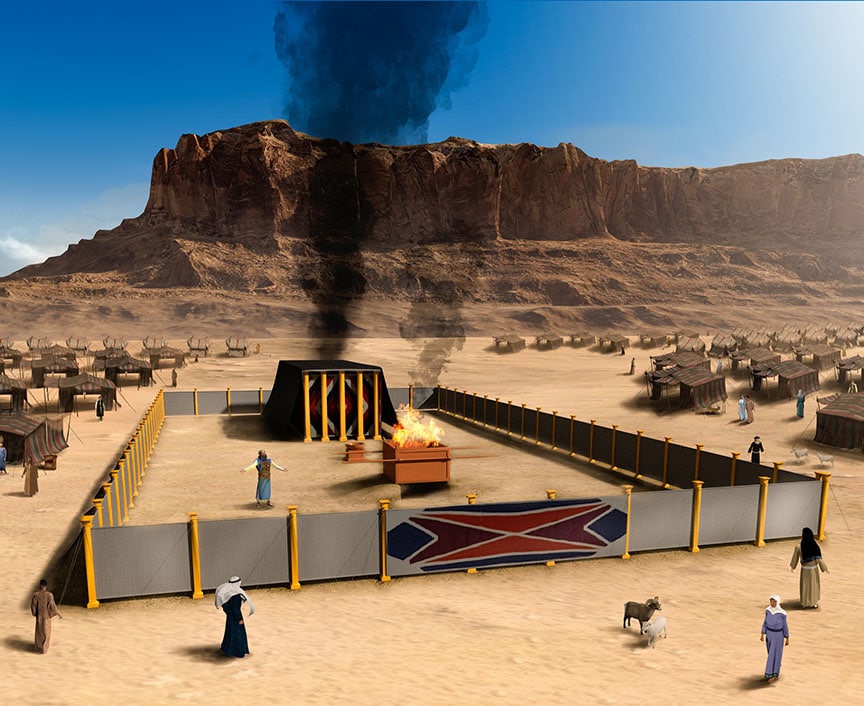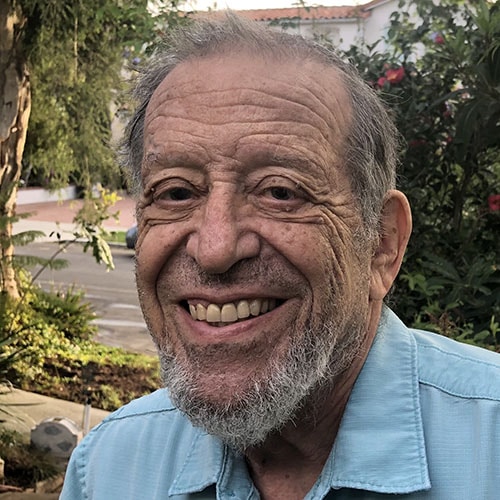 ratpack223/Getty Images
ratpack223/Getty Images “Build Me a tabernacle,” said the Lord,
“so that amongst you I shall be allowed
to dwell.” This order was the Lord’s award
to Israel who had dwelt beneath His cloud
till via Moses this command was given
to its great architect Bezalel, proof
before they sinned that Jews would be forgiven
the moment God came underneath its roof,
although the fundamental reason why
they built it was not as His home,
a landing spot for Him beneath the sky,
where He could dwell while Israelites would roam
for forty years before allowed to enter
the Promised Land, where later they would build
a Temple in Jerusalem, the center
of the earth, for glory – not for guilt.
God’s home was not the tabernacle but
Jews’ hearts in which He wishes to be shut.
He showed to Moses its imaginary blueprints,
foreshadowing how Plato in Timaeus wrote
how shadows on caves’ walls provide us hints
of objects as if they from shadows float.
For both its structure and its contents, Moses
showed God’s instructions to his architect,
The text that he in Exodus composes
as blueprints for what both men would erect.
They made the wooden building out of trees
called shittim in the Bible, our acacia,
its centerpiece an Ark, which had a frieze
of figures quite fantastic, a fantasia
composed of creatures made of solid gold,
winged cherubs that were virtual charioteers
and drove God’s Presence no one could behold
except the angels, of the cherubs peers.
Like pedestals of bulls the Hittites made
for gods that they adored, like Baal-Hadad,
the cherubs had a shape no law forbade,
for idols only make Jehovah mad
if they are not of Him. He cannot bear
to see the images of false gods being served,
but does not mind if His is worshipped where
the laws He’s given here may be observed.
A lot of people still are in a fog
about this, thinking cherubs violated
a prohibition of the Decalogue,
just like the Calf they pled for and gold-plated.
The cherubs occupied a special seat
which they both shared with God, the gold kapporet,
approached on Yom Kippur by the élite,
High Priest, who incense-clouded, stood before it.
Inside the Ark a covenant, the Pact
which testified that God was Israel’s Lord––
a treaty that the Lord has always backed,
despite behavior often untoward,
replacing with a Calf their leading man,
whom they attempted, traitors, to replace,
as Jeroboam later would attempt,
by echoing these Israelites’ disgrace
with calves to show Jerusalem contempt,
for in the tabernacle, Israelites
presumed, as Pope would put it, “God to scan,”
and fashioned cherubs for the sacred rites
thus bringing God’s high image down to Man.
Before the tabernacle could be built
the Israelites composed an epitaph:
“These are our golden gods,” and tried to jilt
the Lord, replacing Moses with a Calf.
By their disloyalty angered, Moses smashed
the tablets on which God Himself had written
the Ten Commandments that they nearly trashed.
For their disloyalty they were not smitten,
because they were protected by a previous
agreement God had made with patriarchs,
preventing our destruction when we’re devious,
as rainbows protect with their colored arcs
all devious descendants of old Noah whom
God saved from drowning in a global tide
in a great Ark, cooperating room,
in which He saved the lives of every Noahide.
The tabernacle also held a table
on which they used to lay the loaves of bread:
a candlestick whose seven arms were able
to cause, as from a jewel, light to spread,
echoing the gem in Noah’s Ark
that kept it most miraculously lit
while all the world outside was damp and dark,
a virtual gemmed menorah retrofit.
In many other ways the tabernacle
recalls the Ark that Noah had to build,
comparison Bezalel used to tackle,
with help from an old architecture guild.
There were two altars, one of burnished gold
on which the holy incense always burned,
and one brass laver which, so we are told,
was made from women’s mirrors Aaron spurned
but Moses said he gladly would accept,
this gift to him the sweetest of them all.
For women Moses always had respect,
and now they gave what helped them to enthrall
their husbands who in Egypt were so tired
they did not wish for comfort in a bed.
The brass from all the mirrors Moses fired
made them more holy than the loaves of bread
the priests laid on the table once a week,
in front of the menorah and the Ark,
a proof that though some think that flesh is weak,
it may inspire spirits with a spark.
The loaves of bread looked like a ship that’s rocking,
an image rhyming with that of the laver
made from bronze mirrors Aaron censured shocking,
while Moses saw their motive with fair favor.
Within the holy tabernacle’s place
no work was done on Sabbath — holy time
far more important than was holy space,
a point with which I shall conclude my rhyme;
for though the tabernacle is no more,
each week our lives with Sabbath can be filled….
once every seven days we have rapport
with God when by the Sabbath we are thrilled.
Writing how in Exodus God showed Moses the design of the tabernacle, I recalled how during my teens one of my Torah teachers, Ephraim Wiesenberg, pointed out to me that the way that Moses was shown the archetype of the Tabernacle (Exod. 26:30; 27:8) proved that the Torah anticipated Plato, who wrote in Timaeus that observable reality is merely a reflection of its theoretically imagined image. Francis Landy records a similar recollection of Professor Rabbi Wiesenberg’s observation in his article, “The Bible Is a Book of Questions, Not Answers,” and a similar concept is evoked by Shai Agnon in his mysterious story, “The Secret Door.”
Gershon Hepner is a poet who has written over 25,000 poems on subjects ranging from music to literature, politics to Torah. He grew up in England and moved to Los Angeles in 1976. Using his varied interests and experiences, he has authored dozens of papers in medical and academic journals, and authored “Legal Friction: Law, Narrative, and Identity Politics in Biblical Israel.” He can be reached at gershonhepner@gmail.com.























 More news and opinions than at a Shabbat dinner, right in your inbox.
More news and opinions than at a Shabbat dinner, right in your inbox.